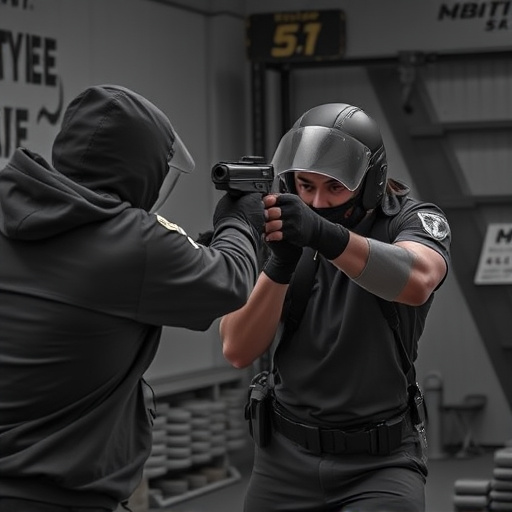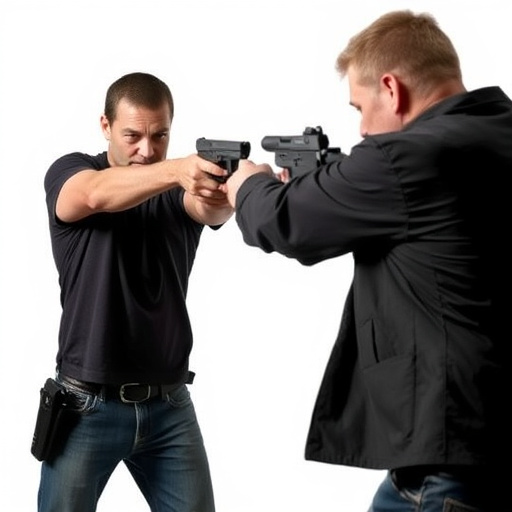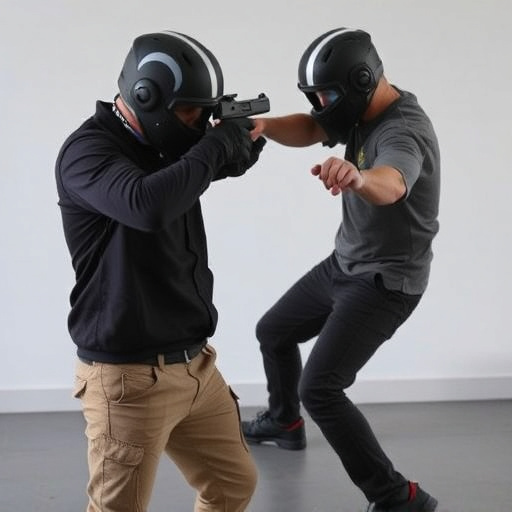Stun devices, or stun guns, are non-lethal personal defense tools that use electrical current to incapacitate targets temporarily. Key features to look for when buying stun guns include reliable current delivery, ease of portability, and straightforward activation mechanisms. Compact, lightweight designs with high voltage outputs, efficient circuitry, and advanced technology offer optimal performance. Ergonomic design, slim profiles, and user-friendly operation ensure these devices can be easily concealed and operated in emergency situations. Prioritize safety by choosing models with automatic shut-off features, adhering to local laws, and aiming for lower body targets. Secure storage is essential to prevent unauthorized access.
“Uncover the science behind stun devices, their primary defense mechanism, and how electrical current plays a pivotal role in their effectiveness. This article delves into the intricate details of stun device operation, exploring the impact of electrical flow and factors influencing its intensity. We discuss design considerations for compact and user-friendly stun guns, emphasizing the importance of portability. Additionally, safety guidelines are highlighted to ensure responsible ownership, encouraging individuals to buy stun guns that are both powerful and easy to carry and use.”
- Understanding Stun Devices and Their Basic Functionality
- The Role of Electrical Current in Stun Device Operation
- Factors Influencing the Flow of Current in Stun Guns
- Designing Stun Devices for Ease of Carry and Use
- Safety Measures and Best Practices for Using Stun Guns
Understanding Stun Devices and Their Basic Functionality

Stun devices, often referred to as stun guns or electronic control devices (ECDs), are non-lethal weapons designed to temporarily incapacitate a target through electrical current flow. These devices have gained popularity for personal protection, especially when individuals seek easy-to-carry and user-friendly options like compact stun guns. The basic functionality of a stun device revolves around delivering high voltage, low amperage electrical pulses to disrupt the target’s neuromuscular system.
When activated, a stun gun generates an intense electric current that flows through the body of the individual it makes contact with. This current interferes with the signal transmission between the brain and muscles, causing sudden muscle contractions and loss of balance or control. The process is non-lethal, aimed at temporarily disorienting the target to enable escape or intervention without causing permanent harm. Comprised of a power source, a circuit board, and electrodes, stun devices are designed for simplicity and effectiveness in personal safety situations.
The Role of Electrical Current in Stun Device Operation

The electrical current plays a pivotal role in the operation of stun devices, ensuring their effectiveness as personal defense tools. When activated, a stun gun releases a high-voltage, low-amperage electric pulse, which delivers a powerful shock to the target. This sudden jolt disrupts the nervous system, causing muscle contractions and temporary incapacitation. The current flow is carefully designed to be enough for stunning but not excessive, making stun devices safer alternatives for self-defense compared to traditional firearms.
Choosing a stun device with reliable electrical current delivery is crucial when considering personal safety. Look for stun guns that are easily portable and feature straightforward activation mechanisms, ensuring you can respond swiftly in emergency situations. Easy-to-carry options, often designed with compact sizes and lightweight builds, allow users to keep their stun devices readily accessible, promoting peace of mind and enabling swift action when needed.
Factors Influencing the Flow of Current in Stun Guns

The flow of electrical current in stun devices, often referred to as stun guns, is influenced by several key factors. One of the primary considerations when buying stun guns that are easy to carry and use is their design and construction. Compact and lightweight models incorporate smaller batteries and more efficient circuitry, ensuring optimal current delivery while minimizing bulk. The type and quality of these components directly impact the device’s overall performance, with advanced technology enabling higher voltage outputs and faster charge cycles.
Additionally, the materials used in the stun gun’s contact points play a crucial role. Conductive materials like copper or brass ensure minimal resistance, allowing for a smoother flow of current. This is essential for delivering an effective shock as it maximizes the energy transferred to the target. Other factors such as weather conditions and environmental temperature can also affect performance; insulated and sealed stun guns are designed to maintain optimal current flow even in adverse environments, making them more reliable and safer to use.
Designing Stun Devices for Ease of Carry and Use

Stun devices designed for ease of carry and use prioritize compactness, weight reduction, and ergonomic design. These features ensure that users can easily conceal a stun gun in their pockets or purses, providing a sense of security while maintaining mobility. When buying stun guns that are easy to carry and use, look for models with slim profiles, lightweight materials, and comfortable grip designs. Such devices often incorporate advanced technologies like high-intensity LED lights and smart sensors, enhancing usability in emergency situations.
Additionally, intuitive activation mechanisms, such as simple press buttons or twist-to-activate features, make these stun devices user-friendly. This is particularly important for individuals who may need to deploy the device quickly, without having to master complex operating procedures. By focusing on these design aspects, stun device manufacturers cater to users’ needs for personal safety while ensuring that the devices are readily available and easy to operate when needed.
Safety Measures and Best Practices for Using Stun Guns

When using stun devices, safety should always be the top priority. Stun guns, or electroshock weapons, deliver a powerful electrical current that can incapacitate an assailant temporarily, but they also come with inherent risks if not handled correctly. It’s crucial to buy stun guns that are easy to carry and use, ensuring their design incorporates safety features like automatic shut-off mechanisms after activation. This reduces the risk of accidental discharge or prolonged use, which could lead to more severe injuries.
Best practices for using a stun gun include maintaining awareness of your surroundings at all times, as the device should be used as a last resort when facing an immediate threat. Keep the stun gun in plain sight and easily accessible, but avoid drawing attention to it unnecessarily. Familiarize yourself with local laws regarding stun guns, as regulations vary by region. Always aim for the center of mass or lower body of your target, never targeting the head or neck, as this could cause permanent damage. Practice safe storage methods, keeping the device in a secure location out of reach of children and unauthorized individuals.
Stun devices, powered by electrical current flow, offer a non-lethal self-defense solution. Understanding how current flows through these devices is key to their effective operation. By considering factors like design, size, and safety practices, users can ensure the optimal performance of their stun guns, especially when choosing easy to carry and use options. Remember, responsible ownership and awareness of local laws are paramount when considering any self-defense tool.
